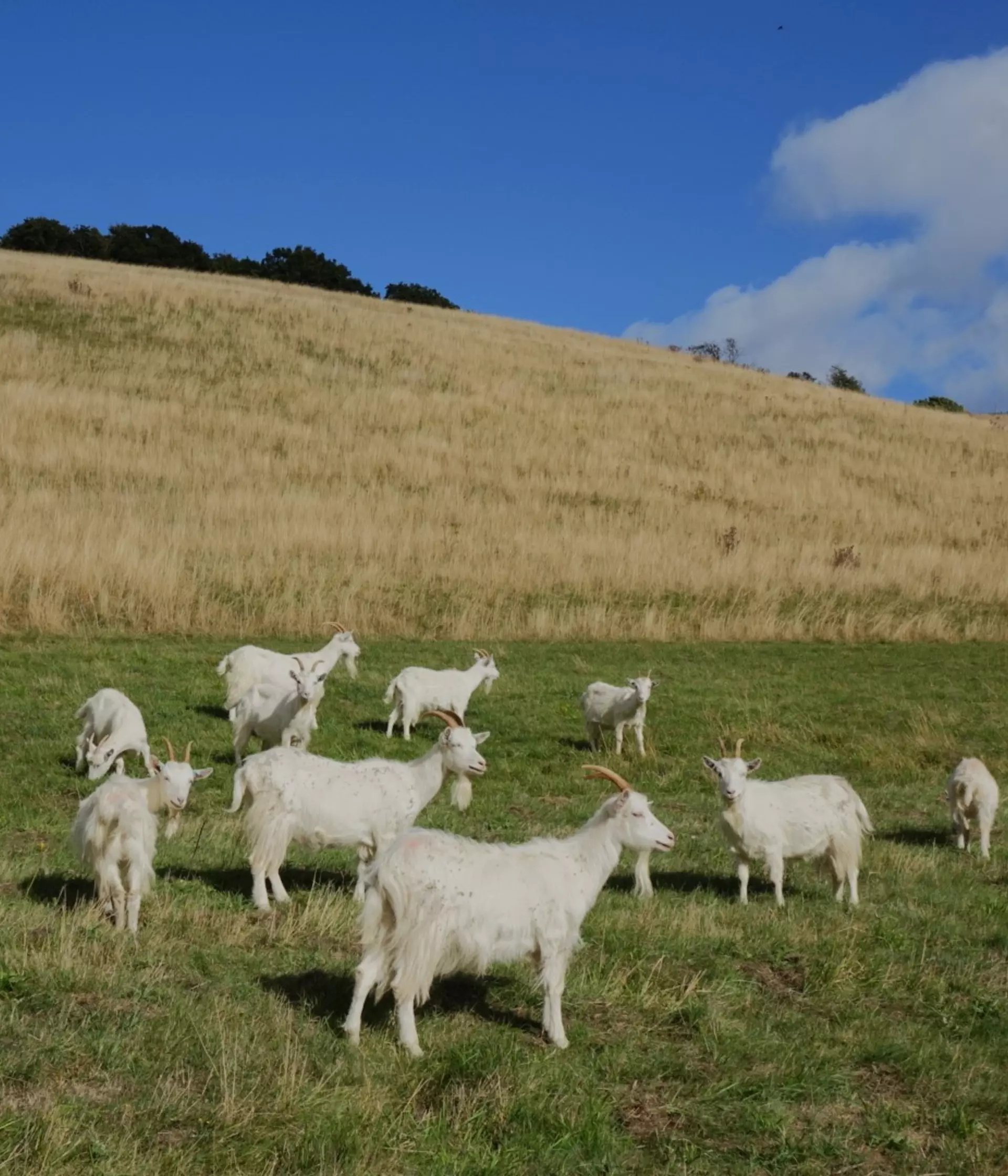
15 Cashmere goats have arrived at Whipsnade Zoo to lend a helping hand, or hoof, to the maintenance of the sprawling SSSI (Site of Special Scientific Interest), which surrounds the iconic 147m chalk White Lion.
Also known as Kashmiri goats, the 15 game-changing grazers have been moved to the conservation zoo from the Great Orme in Wales, specifically to help preserve natural biodiversity across the 600-acre site.

1,500 species of native flora and fauna adorn Whipsnade Zoo in the heart of the Bedfordshire countryside, making the UK’s largest zoo not just a home for endangered species from around the world, but a vital haven for local wildlife.
“The Whipsnade White Lion (nicknamed ‘Roary’ by volunteers) and the surrounding SSSI are cared for by the zoo all year round, using wildlife-friendly methods to protect the native plants and animals,” explained Sarah Forsyth, Curator of Mammals at ZSL (The Zoological Society of London).
“We currently have around 20 volunteers who come and clear the lion each Thursday, which takes an enormous amount of effort and dedication from them. We are unable to use pesticides or machinery on our site due to the sensitivity of the biodiversity in the area, making the work of our volunteers and conservation grazers more vital than ever.”
Preserving natural biodiversity
Whipsnade Zoo’s chalk downs grassland is a rare and important habitat for wildlife in Britain, especially butterflies and orchids. The Kashmir goats will graze the land in the same way the downs were traditionally maintained, which will ensure the site is in the best condition it can be in, and biodiversity is carefully preserved.
Kashgmir goats make the perfect hungry heroes because of their hardy nature. The 15 nannies will be well equipped to enjoy grazing the SSSI in all weather conditions and munching on a diet of robust plants such as thistles, brambles, and nettles. They will be joining Whipsnade Zoo’s existing conservation herd of Soay sheep, who focus more on grasses.
Continuing history
Sarah explained that Whipsnade Zoo’s long history of working with the breed meant the Colwyn Bay Borough Council contacted the Bedfordshire zoo directly about giving the goats a new patch to graze.
“One of our Kashmir goats, Billy, was descended from the royal herd that lives on the Great Orme. He was selected to be the mascot for the Royal Welsh Regiment, and he served in the army for eight years, before returning to Whipsnade Zoo for his retirement,” Sarah said.
“It’s lovely to have Kashmir goats at Whipsnade Zoo again, and the new herd will be doing some really important work to make sure our site a place where all our wonderful wildlife can thrive.”

